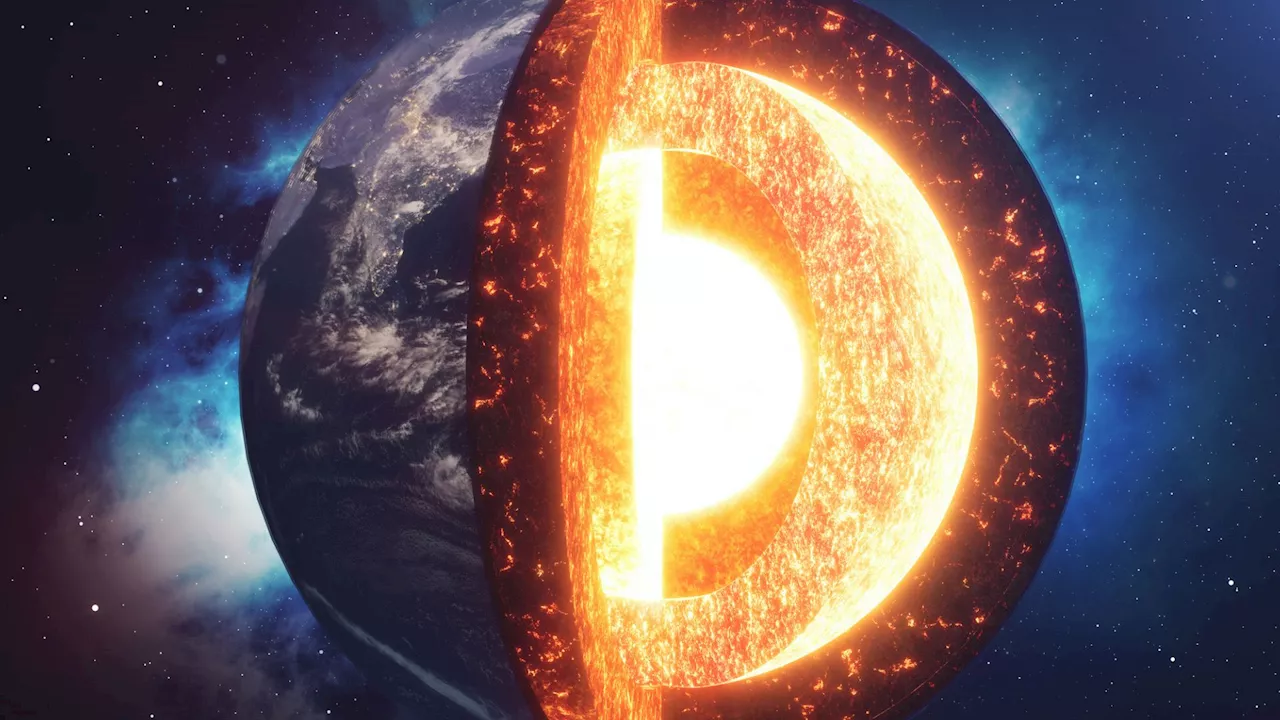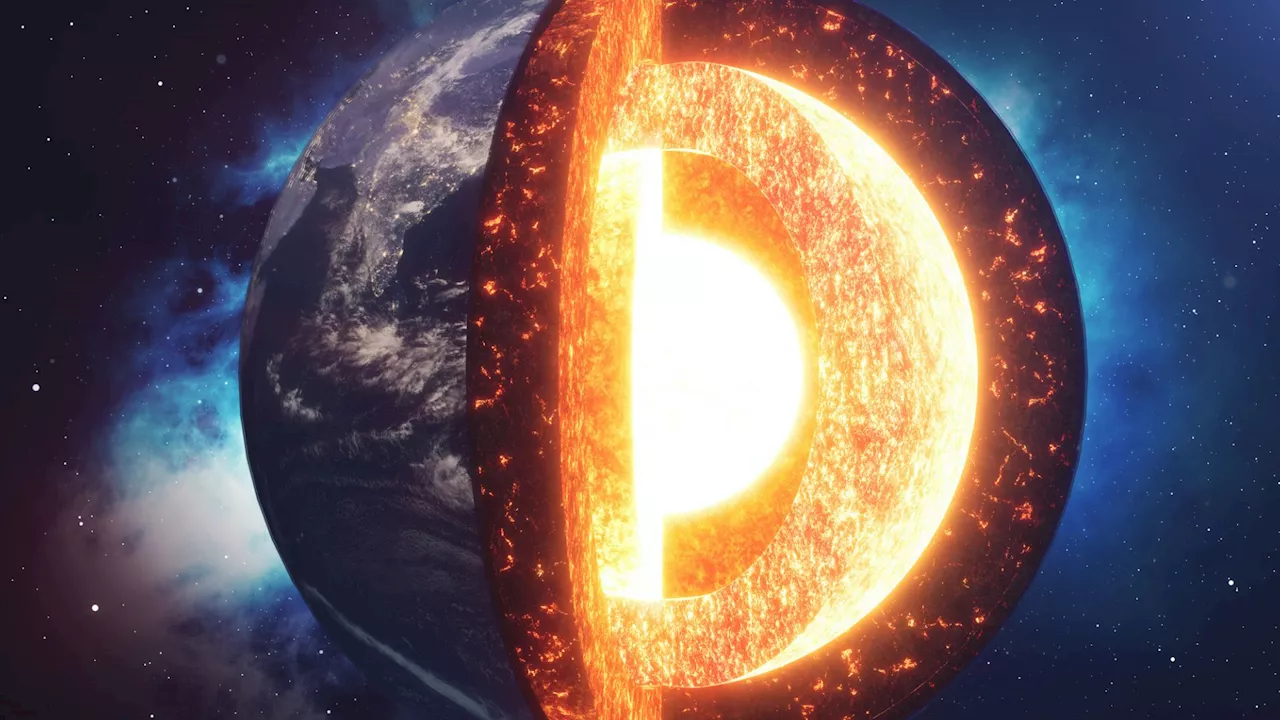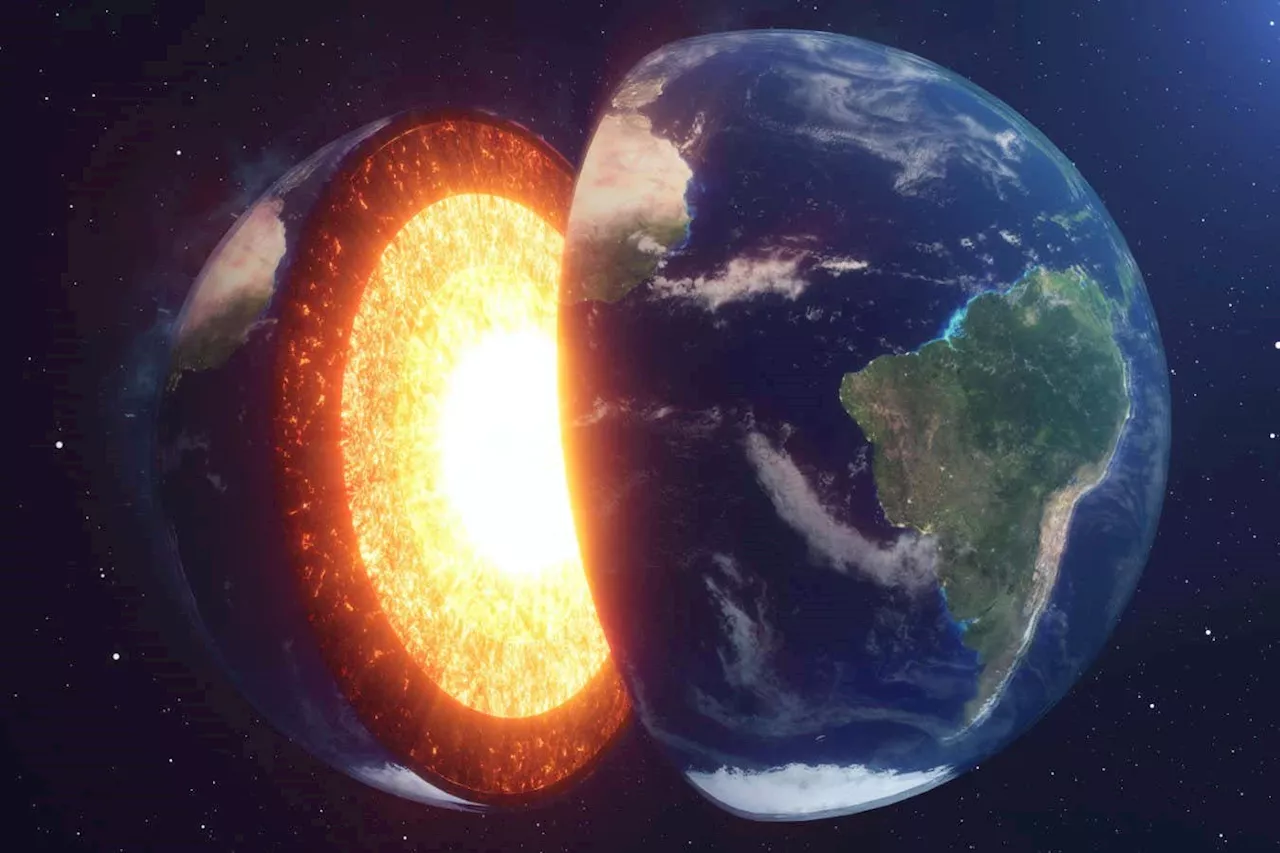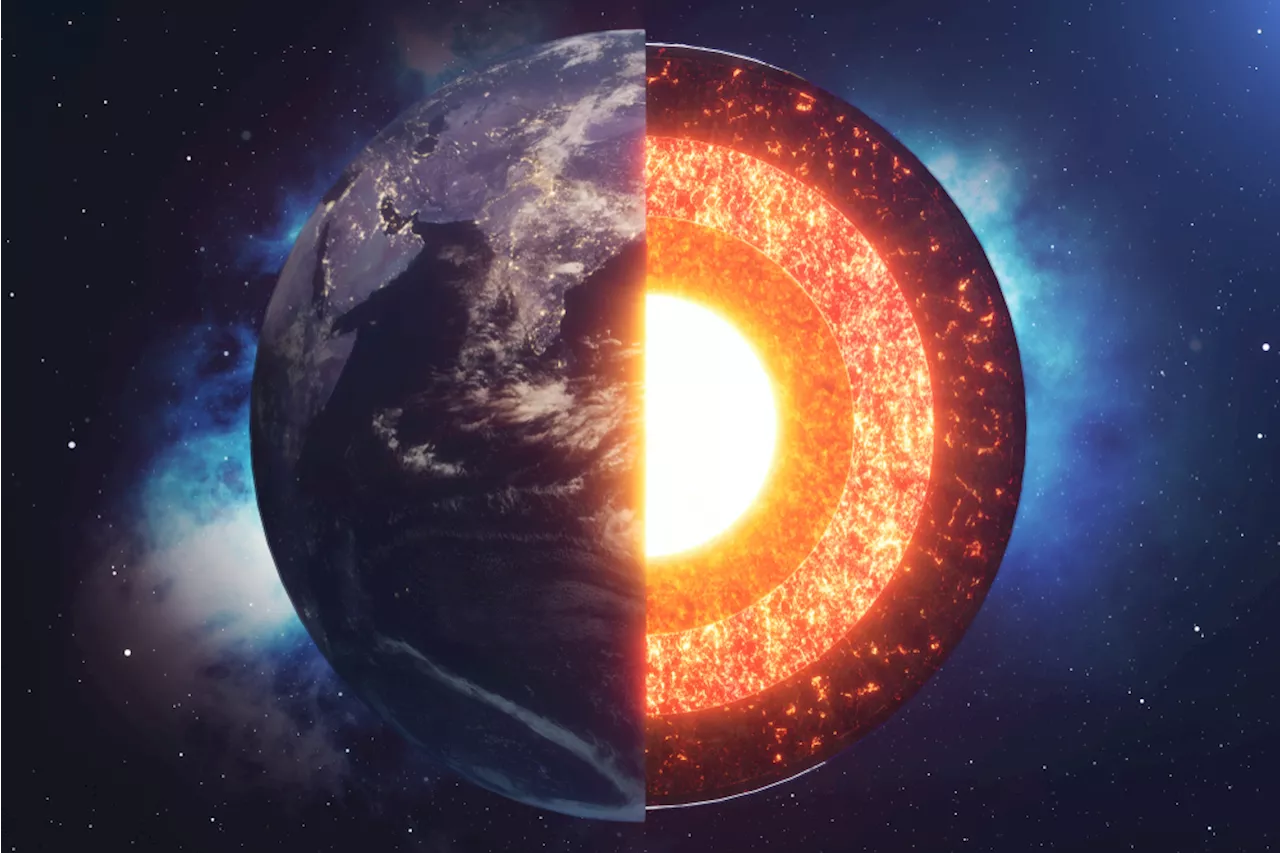A recent study revealed that Earth's inner core is slowing down and is not entirely solid. Scientists from the University of Southern California (USC) analyzed data from earthquakes and identified unexpected changes in the core's composition. They suggest that interactions with the molten outer core and gravitational forces from the mantle contribute to the slowing of the inner core. Further analysis revealed viscous changes near the inner-core boundary, likely caused by interactions between the inner and outer core due to variations in mantle density and convection currents.
A recent study revealed that Earth ’s inner core is slowing down, prompting scientists to investigate further. Their research led to an unexpected discovery: that inner core is not entirely solid.
“It’s very hard to notice, on the order of a thousandth of a second, almost lost in the noise of the churning oceans and atmosphere,” explained John Vidale, Dean’s Professor of Earth Sciences at USC Dornsife College. Further analysis revealed another unexpected finding: “I was analyzing multiple decades’ worth of seismograms, one dataset of seismic waves curiously stood out from the rest,” Vidale noted in areports viscous changes near the inner-core boundary, likely caused by interactions between the inner and outer core due to variations in mantle density and convection currents. That was an accidental discovery as the researchers did not initially intend to redefine the inner core’s physical state.
The great distance between the earthquake source and the seismic stations was necessary to ensure that the waves traveled through the earths inner core, allowing researchers to extract meaningful data about its composition and structure. These distant locations act like a “lens” that captures waves traveling the longest and most informative paths.
INNER CORE EARTH MAGNETIC FIELD ROTATION COMPOSITION
United States Latest News, United States Headlines
Similar News:You can also read news stories similar to this one that we have collected from other news sources.
 Earth's Inner Core Is Changing Shape, Scientists DiscoverFor the first time, scientists have discovered that Earth's inner core, previously thought to be a solid sphere, is actually changing shape. A new study reveals that the edges of the inner core, composed of iron and nickel, are softer than previously believed and are being deformed by the turbulent liquid outer core. This finding, published in a study led by USC Earth Sciences professor John Vidale, challenges previous understanding of the Earth's inner core and opens up new avenues for research.
Earth's Inner Core Is Changing Shape, Scientists DiscoverFor the first time, scientists have discovered that Earth's inner core, previously thought to be a solid sphere, is actually changing shape. A new study reveals that the edges of the inner core, composed of iron and nickel, are softer than previously believed and are being deformed by the turbulent liquid outer core. This finding, published in a study led by USC Earth Sciences professor John Vidale, challenges previous understanding of the Earth's inner core and opens up new avenues for research.
Read more »
 Earth's Inner Core Found to Have Deformed ShapeNew research published in the scientific journal suggests that the Earth's inner core, previously thought to be spherical, has deformed its edges by over 100 meters in height over the past two decades. Scientists analyzed seismic waves from earthquakes between 1991 and 2023, revealing changes in the core's rotation speed and shape. These shifts, occurring at the boundary between the solid inner core and the liquid outer core, may be caused by the movement of the surrounding mantle or forces from the liquid outer core.
Earth's Inner Core Found to Have Deformed ShapeNew research published in the scientific journal suggests that the Earth's inner core, previously thought to be spherical, has deformed its edges by over 100 meters in height over the past two decades. Scientists analyzed seismic waves from earthquakes between 1991 and 2023, revealing changes in the core's rotation speed and shape. These shifts, occurring at the boundary between the solid inner core and the liquid outer core, may be caused by the movement of the surrounding mantle or forces from the liquid outer core.
Read more »
 Earth's Inner Core is Deforming, Suggesting a Dynamic and Evolving PlanetNew research reveals that Earth's inner core is not solid and unyielding as previously thought, but rather deforms over time. This discovery challenges long-held assumptions about the inner core and opens up new questions about its influence on our planet, including the length of our day, Earth's magnetic field, and more.
Earth's Inner Core is Deforming, Suggesting a Dynamic and Evolving PlanetNew research reveals that Earth's inner core is not solid and unyielding as previously thought, but rather deforms over time. This discovery challenges long-held assumptions about the inner core and opens up new questions about its influence on our planet, including the length of our day, Earth's magnetic field, and more.
Read more »
 Earth's Inner Core Is Changing Shape, Study FindsA groundbreaking study reveals that the Earth's inner core is not as solid as previously thought and its surface is undergoing structural changes likely caused by interactions with the turbulent molten outer core.
Earth's Inner Core Is Changing Shape, Study FindsA groundbreaking study reveals that the Earth's inner core is not as solid as previously thought and its surface is undergoing structural changes likely caused by interactions with the turbulent molten outer core.
Read more »
 Earth's Inner Core Shows Signs of Structural ChangeResearchers from the University of Southern California have made a groundbreaking discovery about Earth's inner core. Analysis of decades of seismic data reveals that the surface of the inner core is undergoing structural changes, suggesting it is not completely solid.
Earth's Inner Core Shows Signs of Structural ChangeResearchers from the University of Southern California have made a groundbreaking discovery about Earth's inner core. Analysis of decades of seismic data reveals that the surface of the inner core is undergoing structural changes, suggesting it is not completely solid.
Read more »
 Forces deep underground seem to be deforming Earth's inner coreSeismic waves suggest the planet's solid inner core is being pulled out of shape – and it has undergone these changes over just a few decades
Forces deep underground seem to be deforming Earth's inner coreSeismic waves suggest the planet's solid inner core is being pulled out of shape – and it has undergone these changes over just a few decades
Read more »
